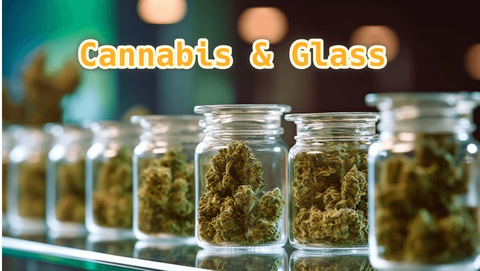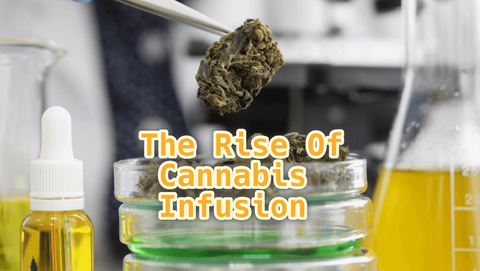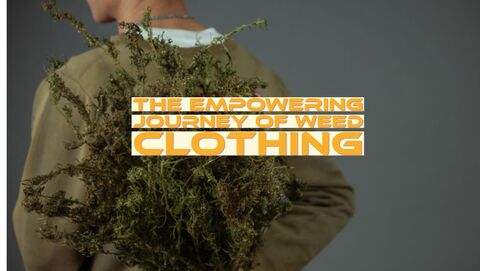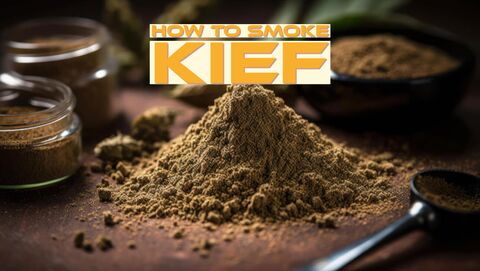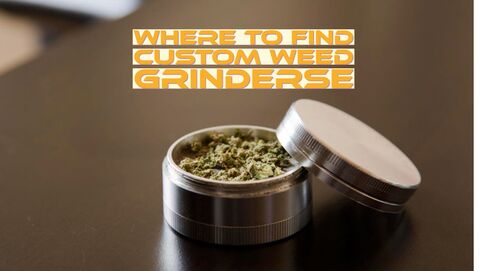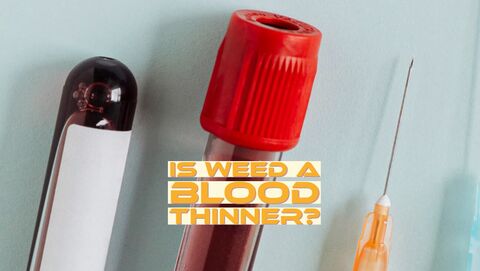Latest Blog Posts
Top rated
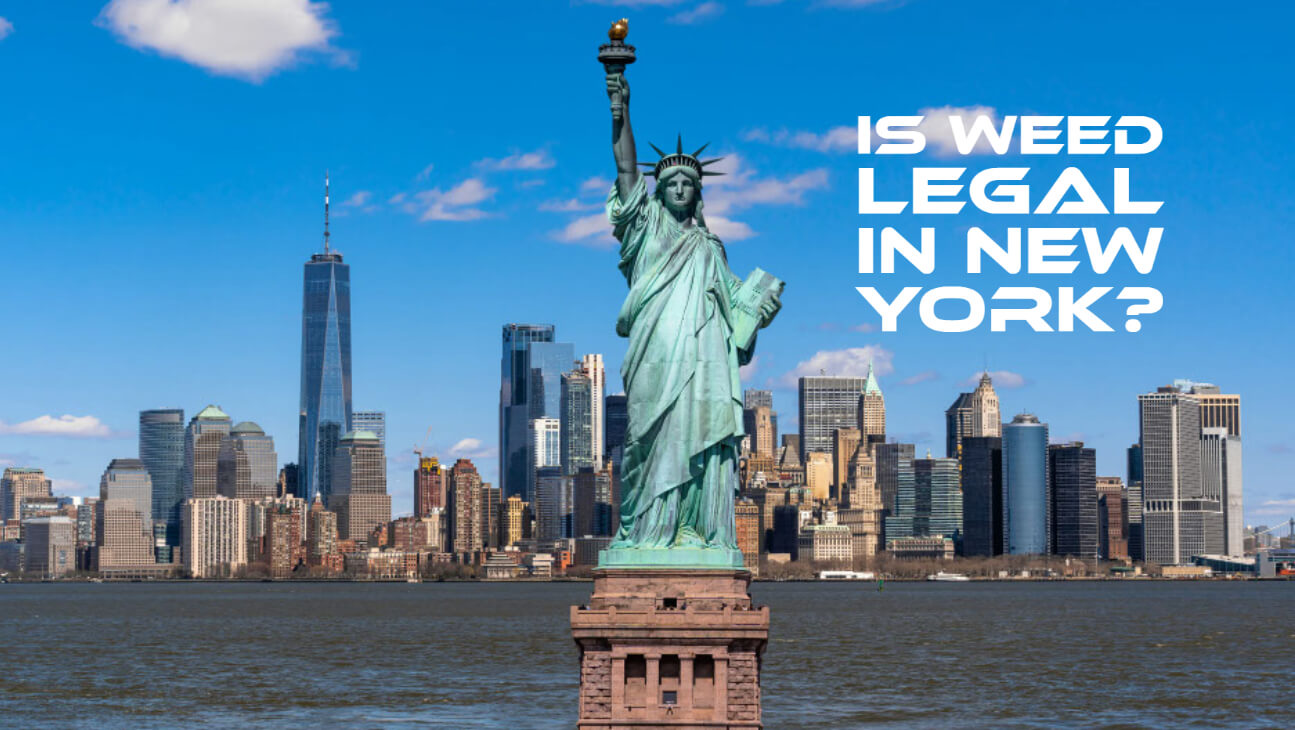
Is Weed Legal In New York?
Since 2016, cannabis has been legal in New York for medical use, and since 2021, cannabis has been allowed for recreational use. However, as of August 2022, cannabis will no longer be lawfully sold for recreational use anywhere in the state (except on Indian reservations).
Some studies place the usage of weed as far back as the 2nd century B.C., since its psychotropic chemical components and the effects it caused on the neurological system were already understood at that time. There is a wide range of ways in which weed can influence both the mind and the body of a person.
Since this is a topic that is currently receiving a lot of attention, several studies have been conducted over the past few years to investigate both the potential risks associated with smoking hashish or weed and the potential advantages that can be gained from using this plant, particularly from a pharmacological point of view.
After this article, you will understand what happens when you smoke marijuana, as well as the effects that it has on your body from both a physiological and psychological standpoint. However, before doing that, you'll find the distinctions that exist between various substances and plants.
Cannabis, Marijuana, And Hashish: The Differences Between Weed, Smoke, And The Plant
The distinction between so-called smoke and weed, also known as marijuana and hashish, is found in the place of origin as well as the quantity of THC that each substance contains. Cannabis is the plant that is typically referred to as the source of marijuana and hashish. There are numerous varieties of cannabis, including cannabis Indica (also known as Indian hemp) and cannabis Sativa, both of which are included in this plant. In common usage, the plant that is cultivated for use in the production of textiles is known as hemp, but the plant from which marijuana is derived is known as cannabis. Hence, hemp and marijuana refer to the same plant.

The terms "weed" and "smoke" refer to substances that are derived from the processing of hemp to be smoked and that are classified as psychoactive narcotic substances. These chemicals are referred to as cannabis. To be more specific, "weed" refers to what is more widely known as marijuana, and it is produced from the dried female inflorescences of the plant.
On the other hand, "smoke" or hashish is produced by processing the resins that are produced by the plant's inflorescences. Because it can be processed using chemicals to increase the volume of the molecule, hashish is typically seen as being less natural than marijuana itself. This is since it has a higher concentration of the psychoactive component of this plant known as THC.
These are the primary distinctions between hash and pot; but, before you go any further, take a deeper dive into the concept of psychoactive substances as well as the impacts that marijuana and hashish have on your bodies and minds.
What Exactly Happens When You Light Up A Joint?
Hashish and marijuana are typically smoked, and the act of doing so is referred to in the parlance as "smoking a joint."
The effects of the joint are almost immediate; at the very latest, they can be experienced after 30 minutes, and in general, the effects of a joint continue for two to three hours.
If hashish or marijuana is consumed, the effects can persist for several hours, particularly if taken on an empty stomach. When this occurs, one is unable to control the severity of the effects and experience, and as a result, extreme caution is required.
The compounds that come from cannabis are psychoactive, which means that if one consumes them, they will primarily have effects on one's mind and brain. However, they may also have impacts on other bodily systems, such as the cardiovascular or respiratory systems.
But what exactly takes place when you light up a joint? When marijuana is smoked, the endocannabinoid system, which includes the encephalon, is the organ that absorbs THC because it contains a substantial amount of fat. THC can be detected even several months after it has been consumed specifically because of its propensity to be stored in fatty tissue.
When people smoke, the levels of THC in their blood quickly increase within 15 to 20 minutes, and although they then decline pretty fast, the effects of smoking continue to be felt for approximately 3 to 4 hours after the smoking session has ended. When the impact finally wears off, people are typically overcome with a strong desire to eat items high in calories and a large amount of hunger. If you continue to smoke despite the fact that THC stays in your body for days or weeks at a time, the effects of the chemical will become more pronounced.
The Effects Of Using Cannabis
Consumption of cannabis has a wide range of effects, which can be categorized as either short-term or long-term, psychological or physical. There is also a combination of these types of effects.
Taking into account the fact that over the course of the centuries, it has been a substance that has piqued the interest of specialists in a wide variety of fields—chemists, doctors, and so on—a significant number of studies have been carried out in order to determine the actual effects that the consumption of these substances can have, particularly when smoking so-called weed and hashish.
Immediate effects include a slightly elevated heart rate, a feeling that is somewhere between tiredness and alertness, and moderate relief from pain.
The vasodilator effect, along with dry lips and increased appetite, especially after the effects of cannabis begin to wear off, causes the eyes of cannabis users to seem glossy and inflamed. This is because of the vasodilator effect.
Because tetrahydrocannabinol, or THC for short, is the primary psychoactive component of cannabis, it has the ability to distort the sensory perception of reality, increase hilarity and talkativeness for several hours (which will be followed by hours of drowsiness and apathy), and can affect the ability to think normally, memory, and coordination of movements. Psychologically, this can produce a decrease in intellectual functioning.
Benefits Of Cannabis
When discussing the effects that cannabis has on the body, it is important to first differentiate between the numerous factors that have the potential to have a major impact on the responses that this substance elicits from the body to have a clear picture of the full picture. Cannabinoids can have different effects depending on how they are used, whether for medical or recreational purposes, the type of drug that is consumed, and the number of cannabinoids that are included within it.
The difference between traditional marijuana and light hemp, which has been decarboxylated of psychotropic and psychoactive active components such as THC, is one that is very remarkable. These factors, despite their apparent insignificance, therefore contribute to various benefits to the body.
The Most Important Advantages Of Cannabis
Because of its significantly relaxing and calming impact, medical marijuana, in particular therapeutic cannabis with a high level of CBD, is finding widespread use in the treatment of anxiety, stress, depressed states, and sleep-related issues. The presence of the endocannabinoid CB1, which in recent years has been found to play a fundamental role in the development of the nervous system, performing a neuroprotective function and determining euphoriant, antispasmodic, hypotensive, analgesic, and antioxidant effects, allows legal marijuana to also exert an antioxidant and anti-inflammatory action.
This is thanks to the presence of the endocannabinoid CB1. Because CBD itself would prevent the body from absorbing anandamide, a compound associated with the reception of pain, the analgesic power of cannabidiol is elevated above all else. Cannabidiol, therefore, represents a valid alternative to conventional analgesic drugs in the presence of chronic pain caused by migraines, multiple sclerosis, and rheumatic pain. The last benefit of legal marijuana to be discussed is its anticancer and anticonvulsant effects, both of which are now the subject of research and are of significant interest to the scientific community.
CBD's Numerous And Relative Benefits To Both Physical And Mental Health
Cannabidiol, also known as CBD, is a type of cannabinoid that has been exposed to its well-known psychoactive counterpart, tetrahydrocannabinol, or THC for short. THC is easily defined as a "metabolite of cannabis," and cannabidiol is able to be assimilated by the body rather rapidly and immediately because of this. This particular active component does not exhibit any psychotropic action, which indicates that it does not produce any sort of euphoric response in the brain. CBD has been the subject of a significant amount of research in recent years, and this investigation has resulted in widespread recognition of the CBD's numerous and relative benefits to both physical and mental health.
Its proapoptotic and antiproliferative function, which ultimately results in the prevention of cancer cell proliferation, is one of the most notable of these effects. This was shown by a study that was carried out in 2006. It was carried out by a group of researchers at the University of East England, and it highlighted the cellular mechanism by which cannabidiol would appear to spontaneously induce breast cancer cell death.
Benefits That Can Be Gained From Using Mild Weed
Cannabinoids, which are included in marijuana, have been demonstrated to be useful in the treatment of pain by suppressing neuronal transmission along pain pathways. This analgesic effect is one of the benefits that can be gained from using mild weed. Cannabidiol is utilized extensively in the treatment of inflammatory and autoimmune illnesses because of its function as a natural anti-inflammatory.

To this day, CBD has also been shown to be an important component in the treatment of schizophrenia and conditions associated with mental illness. In point of fact, research suggests that CBD is capable of exhibiting a substantial antipsychotic action, despite the fact that the mechanism behind this effect is not yet established.
CBD has also been shown to have an anxiolytic effect, according to a number of studies that have been conducted over the past few years. These studies have shown that CBD is effective at reducing anxiety and panic attacks in patients who suffer from a social anxiety disorder, as well as successfully controlling obsessive-compulsive disorder and post-traumatic stress disorder.
But that is not the end of the effects of cannabidiol. The use of CBD in the treatment of epilepsy has also been shown to have a variety of beneficial effects, particularly in cases where the condition is resistant to pharmacological therapy and in children.
The well-known cannabinoid would actually be able to prevent the toxic effects of neuro glutamate and radical oxygen species (ROS) in the brain, thereby reducing the amount of brain cell death that occurs as a result. This is another area in which it is shown to be of great assistance in the treatment of neurodegenerative diseases.
Other Important Positive Effects
Because it has a greater antioxidant effect than even vitamins C and E, CBD has the potential to be used as a shock therapy in the treatment of neurodegenerative illnesses including Parkinson's disease and Alzheimer's disease. In addition, CBD is known to have positive effects as an anti-nausea and antiemetic medication. These effects are especially helpful for patients who suffer from eating disorders or diseases that cause a significant loss of appetites, such as AIDS and HIV. According to the findings of a large amount of scientific research, it has also been shown to have the power to lower the prevalence of diabetes by considerably lowering insulin production and high blood glucose levels.
Because cannabidiol, when combined with THC or tetrahydrocannabinol, would appear to show efficacy, especially during the treatment phase of muscle contraction, pain, sleep disturbances, and urinary incontinence in those affected by this severe autoimmune disease, it represents a viable alternative therapy in the treatment of multiple sclerosis. This is because cannabidiol when combined with THC or tetrahydrocannabinol.
Rheumatoid arthritis patients suffering from joint discomfort can find relief from their symptoms using medicinal marijuana's marked and considerable anti-inflammatory action. This helps patients improve their mobility while also reducing the inflammatory state of their condition.
Consuming cannabis in accordance with the law not only alleviates a number of skin diseases, including acne and psoriasis but also leads to an improvement in the quality of sleep experienced by persons who suffer from chronic insomnia. Cannabidiol may also be helpful to those who are experiencing depression because of its well-known and well-established ability to relax and calm people down. This is the case in the event that major indications of depression are present.
Weed's Potential As A Medicine For Dealing With Stress, Depression, And Anxiety
Though, cannabis is a plant that, when consumed in modest quantities as herbal teas, decoctions, or preparations intended for vaporization, has positive effects on anxiety, depression, and stress. This holds true independent of the means of ingestion.

Around 1,400 individuals were surveyed by researchers at the University of Washington who were taking medical marijuana to treat the aforementioned conditions. Patients were asked to use a scale from one to ten to rate the intensity of their symptoms; the results showed that medical marijuana considerably mitigated these symptoms.
Patients who used cannabis with a CBD concentration of at least 9% and a THC concentration of no more than 5.5% reported a 50% reduction in depression and a 58% reduction in anxiety and stress after using the drug. Increasing the dose of cannabis significantly was found to alleviate stress symptoms; specifically, cannabis with a CBD concentration of at least 11% and a THC concentration of at least 26% was needed. It was found that the effects of cannabis changed when it was used under pressure.
But it's important to remember that, unlike cannabis, antidepressant and anxiolytic medication use, despite having beneficial effects in the short term, may result in increased vulnerability to relapse after therapy has been discontinued, especially if the therapy has been ongoing for a considerable amount of time. There is evidence that using marijuana can cut the chance of relapse by half. Therefore, more study is needed to determine if cannabis can permanently alleviate symptoms associated with stress, sleeplessness, and anxiety, or if it merely provides a temporary buffer.
Therapeutic Benefits Of Cannabis
According to the findings of the Ministry of Health, cannabis used for medical purposes is currently being successfully employed as an alternative therapy to reduce the manifestations and effects related to certain diseases in cases where conventional medical treatments are not having the desired effects. Medicinal marijuana is now widely used in the treatment of spastic and painful manifestations caused by multiple sclerosis, as well as by spinal cord injuries, where cannabinoids themselves are a valuable aid in relieving particularly intense pain states. Multiple sclerosis (MS) is a neurodegenerative disease that affects the central nervous system.
Particularly well recognized are the benefits that are also observed in patients who are undergoing chemotherapy, radiation, or HIV treatments. This is due to the fact that CBD when combined with THC, determines a pronounced anti kinetic and antiemetic action, which in turn reduces nausea and vomiting.
People who are afflicted with cancer, cachexia, anorexia, or HIV may benefit tremendously from medical cannabis treatment. Cannabis oil may also be especially helpful in treating the symptoms of these conditions. In addition to this, it stimulates the patient's appetite, which results in an increase in weight gain.
This is essential for maintaining the patient's health in a state that is commensurate with the illness from which they are suffering. It therefore also makes it possible for an efficient reduction of intraocular pressure in glaucoma by virtue of the hypotensive action supplied by the substance, so maintaining the retina. This takes place as a result of the neuroprotective characteristics that are often assigned to cannabidiol.
Last but not least, medicinal cannabis is also employed in the treatment of Gilles de la Tourette syndrome. In this respect, the medication works to lessen the severity of nervous tics and to a greater extent control involuntary movements of the face and body.
Excessive Use Of Cannabis Can Have Adverse Effects On Both Mental And Physical Health
Hashish and marijuana, when consumed in extremely high concentrations, have the potential to induce paranoia, hallucinations, and panic attacks. When cannabis use is combined with the use of other substances, such as tobacco or alcohol, the effects of cannabis can become more severe and, more importantly, create a greater degree of dependence. This is especially true in the case of tobacco, as the substances contained in a cigarette causes a very powerful addiction.
In the long run, the immediate effects can be exacerbated, causing irreparable damage to neurons and generating persistent changes in mood, memory loss, or sleep issues that hinder one from engaging in typical levels of personal and professional activity.
According to the findings of some different health organizations, excessive use of cannabis can have adverse effects on both mental and physical health, and can even cause conditions such as depression or psychosis by acting as a trigger for these types of mental illnesses.
Despite this, supporters of cannabis are fighting for a relaxation of restrictions on the usage of the drug for both recreational and medical purposes. The analgesic impact can be particularly beneficial in easing symptoms of some chronic conditions, preventing seizures, and also helping in the treatment of attention deficit disorders, according to those who support its legalization and use.
Effects On Memory And Cognitive Abilities
Some studies appear to confirm a connection between the use of weed and its effects on one's memory and cognitive capacities. Specifically, it would appear that the use of long-term memory is not hindered by chronic use of such substances; but, slower learning and the creation of short-term memory, as well as problems recalling new knowledge, have been identified.
These symptoms, according to the findings of that research, tend to go away once the use of marijuana and hashish is discontinued.
Because the brain is still developing during this time, taking such substances can cause impairment of several cognitive and neuropsychological parameters, which do not appear to be recoverable in adults. Other studies have confirmed that chronic cannabis use does not cause cognitive impairment, but beginning consumption in adolescence does.
When it comes to the other cognitive effects of cannabis, on the other hand, movement control is directly involved in its use: in fact, an individual may present with reduced stability of posture or reduced firmness of reflexes and hand, as well as difficulty performing tasks that require special attention.
At the cognitive level, other types of impairment may also develop. These types of difficulties may be considered effects of cannabis on behavior, but they are extremely subjective. For instance, an increased appreciation of food, a sense of taste, recreational activities, and music may be some examples.
The Negative And Positive Effects Of Weed
After this lengthy digression on the effects of cannabis, now it's becoming possible to differentiate between the potential risks and rewards that are linked with cannabis use, based on the findings of several kinds of research.
The discussion over the advantages and disadvantages of using this plant spans several different spheres and is very relevant. As you've seen, the active ingredient in marijuana that is responsible for its psychoactive and pharmacological effects is tetrahydrocannabinol (THC). This is because THC can bind to specific receptors on cells in our bodies that are responsible for the production of endogenous cannabinoids, which gives it the ability to interfere with specific bodily processes.
Weed, on the other hand, has been proven in recent years to be a treatment for chronic pain that is more effective and poses a lower risk of adverse effects than opioid-based medications. This is especially true in some disorders, such as multiple sclerosis. Additionally, it is used to alleviate nausea and vomiting in cancer patients who are receiving chemotherapy treatment.
Its potential benefits are also being investigated for the treatment of certain neurodegenerative disorders, such as Tourette's syndrome, as well as other psychological conditions, such as anxiety disorder, and for boosting appetite in patients living with AIDS.
Is Weed Legal In New York?
Those who are over the age of 21 in the state of New York are allowed to legally possess up to 3 ounces of cannabis and up to 0.85 ounces of cannabis concentrate for their own personal use. These amounts cannot exceed the state's possession limits. Adults in states that have passed laws prohibiting the smoking of tobacco can legally smoke or vaporize cannabis in the same public places where cigarette smoking is allowed, with a few significant exceptions.
It is against the law to possess cannabis while driving a vehicle, even if the vehicle is parked, and it is also against the law to possess cannabis at restaurants that have outdoor seating. If you smoke or vaporize cannabis in a location where it is not permissible to do so, you could potentially face legal action as well as a fine for your actions.
It is still against the law for anyone under the age of 21 to have cannabis in their possession, sell cannabis, or consume any quantity of cannabis. This includes both selling and using cannabis. In addition, it is against the law for anyone to possess more than three ounces of cannabis or 0.85 ounces of cannabis concentrate, sell cannabis in any quantity without a license, or operate a vehicle while under the influence of cannabis. Additionally, it is against the law for anyone to sell cannabis in any quantity without a license.
- Stores that have been granted permits to sell cannabis goods are available to adults for the purchase of cannabis products.
- Adults are allowed to cultivate up to three cannabis plants in their homes if they so choose. There is a limit of six plants that can be grown in each household as long as there are at least two adults present (three mature and three immature).
- Adults are permitted to keep up to two kilograms of cannabis in their homes at any given time.
- Municipalities, such as cities and towns, have the authority to create spaces known as on-site consumption areas, in which individuals are permitted to use cannabis.
Medical Cannabis Laws In NYC
Under the state's medicinal marijuana program, people who live in New York have been legally authorized to buy cannabis for medical purposes from the year 2016.
Individuals may treat their own medical illnesses with medicinal cannabis provided a state-licensed health care physician certifies that the medical cannabis is clinically appropriate for the individual patient's condition. For patients to obtain medical cannabis, the state requires that they first register with the state.
The new legislation allows for increased access to medical cannabis, an increase in the number of caregivers that can be assigned to each patient, an increase in the amount of time that prescriptions can be filled from 30 to 60 days, and the authorization of the purchase of smoked cannabis at distribution points for medical marijuana.
Patients who are registered with the Certified Medical Cannabis Program will, after the rules have been finalized, have the opportunity to cultivate up to six cannabis plants in their own homes at any given time.
The Second Most Frequently Used Substance In The State Of New York
After alcohol, cannabis, more popularly known as marijuana, is the recreational substance that is used the second most frequently in the state of New York. It can be smoked, vaporized, or taken as food or drink (edibles), and the effects it produces can include sensations of relaxation and exhilaration, as well as anxiety and a faster heart rate. So, New York's cannabis industry is growing.
THC is one of the hundreds of chemicals that can be found in the cannabis plant (delta-9-tetrahydrocannabinol). THC is a molecule that is psychoactive, meaning that it gives people the sense of being high. The many strains and preparations of cannabis each have their own unique effects due to the varying quantities of THC they contain. The THC content of a cannabis product directly correlates to the potency of its impact.
Concentrates such as dabs, waxes, and oils can contain far higher quantities of the psychoactive compound tetrahydrocannabinol (THC) than other forms of cannabis, which normally contain just about 20% THC. The THC content of concentrates can range anywhere from 40% to 90%. Concentrates have the potential to generate a high that is both more rapid and stronger than that of other forms of cannabis, and they may also offer a larger risk to one's health. The effects of consuming cannabis in the form of food and drink come on later and linger for a longer period of time than those brought on by smoking or vaporizing the substance.
A person's response to cannabis may also be affected by factors such as their age, height, weight, medical condition, medications they are currently taking, tolerance level, as well as the foods, liquids, and pharmaceuticals they have taken throughout the day.
Recommendations On How To Make The Usage Of Cannabis Less Risky
The following are some tips on how to use cannabis more safely:
- When you've been drinking, you shouldn't drive. Driving while under the influence of any substance, including weed, is not only dangerous but also against the law. When under the influence, no one drives better. If you drive while under the influence of alcohol or drugs, you put yourself and others on the road in greater danger of being killed or injured in an accident.
- Take care not to consume an excessive amount of weed too rapidly. Weed, in all of its forms and varieties, can produce a wide range of effects, some of which are more potent than others. The effects of certain kinds of cannabis and strains may come on gradually. Edible cannabis products, for instance, can deliver their full effects in as little as four hours after consumption. You should begin with a low dose and see how your body reacts to it before determining whether or not to increase the dosage. You should begin with a low dose and gradually increase your use.
- It is important to avoid taking many medications at the same time. Combining cannabis usage with the consumption of other substances, particularly alcohol, may produce unexpected side effects. If you are already using prescription medications, you should see your physician about the possible side effects of combining cannabis with your medication.
- It is important to steer clear of smoking cannabis that has been rolled or that has been blended with tobacco. There is no such thing as a safe amount of secondhand smoke or direct exposure to tobacco usage.
- Have a conversation with your primary care physician about the potential effects of cannabis use on other health conditions. Cannabis could have a distinct effect on you depending on the type of illness you have, whether it be acute or chronic.
- Caution is warranted while dealing with synthetic cannabinoids, often known as K2. They are not marijuana in any way. It is impossible to predict the effects of synthetic cannabinoids, and it is possible that they are not the same as those of cannabis.
- Keep marijuana out of the reach of children and teenagers. There have been cases in which children have accidentally consumed cannabis that appears like edible cannabis. Keep edible cannabis in a place that is distinct from other foods and beverages if you have it in your house. Keep any cannabis products in a safe place where anyone under the age of 21 cannot see them or gain access to them.
CBD In The City That Never Sleeps
CBD is a substance that is produced as a by-product of industrial hemp and is one of the compounds that are found in the cannabis plant. CBD, on the other hand, does not produce the same effects of intoxication that THC does. CBD is used by people for several reasons, but there is no conclusive proof that it has any positive effects on health.
In the United States, CBD products can be sold legally as long as they contain less than 0.3% of THC. However, the Food and Drug Administration (FDA) has not given its approval to the use of CBD in foods and beverages, and it is illegal in the state of New York to sell foods or beverages that contain CBD. Food service facilities and retail stores that sell food or beverages containing CBD may be subject to violations brought forth by the Department of Health.
The Bottom Line
The effects of cannabis use are varied and can be divided into immediate and delayed reactions, as well as mental and bodily aspects. These effects can also occur in tandem with one another.
A large number of studies have been conducted to determine the actual effects that consumption of these substances can have, especially when smoking so-called weed and hashish, because over the centuries it has been a substance that has piqued the interest of specialists in a wide variety of fields (chemists, doctors, etc.).
In New York, adults over the age of 21 can lawfully carry three ounces of marijuana or eighty-five ounces of cannabis concentrate. In places where tobacco smoking is illegal, adults can legally smoke or vaporize cannabis in the same public areas as cigarette smoking is allowed, with a few notable exceptions. This is about adult use which also claims office of cannabis management in New York city. Following the adhering to all laws and regulations is important for regulation and taxation of all aspects. So, concentrated cannabis of 85 ounces is permissible for adults 21 and older. Many people are, thus, satisfied and happy that New York state allows adult use cannabis.
It is illegal to own cannabis in any public place, including the outdoor areas of restaurants. This includes both while driving and when parked. There is the possibility of legal action and a fine if you smoke or vaporize cannabis in an area where it is not permitted.
People under the age of 21 are still breaking the law if they are caught with, selling, or using any amount of cannabis. That covers all interactions with cannabis, whether for sale or use. In addition, it is illegal to sell cannabis in any quantity without a license, to operate a vehicle while under the influence of cannabis, or to possess more than three ounces of cannabis or 0.85 ounces of cannabis concentrate. Further, it is illegal for anybody to sell cannabis in any quantity without a valid license.
Disclaimer: This material is for informational purposes only and should not be relied on for legal, medical, financial, or any other form of professional advice.






